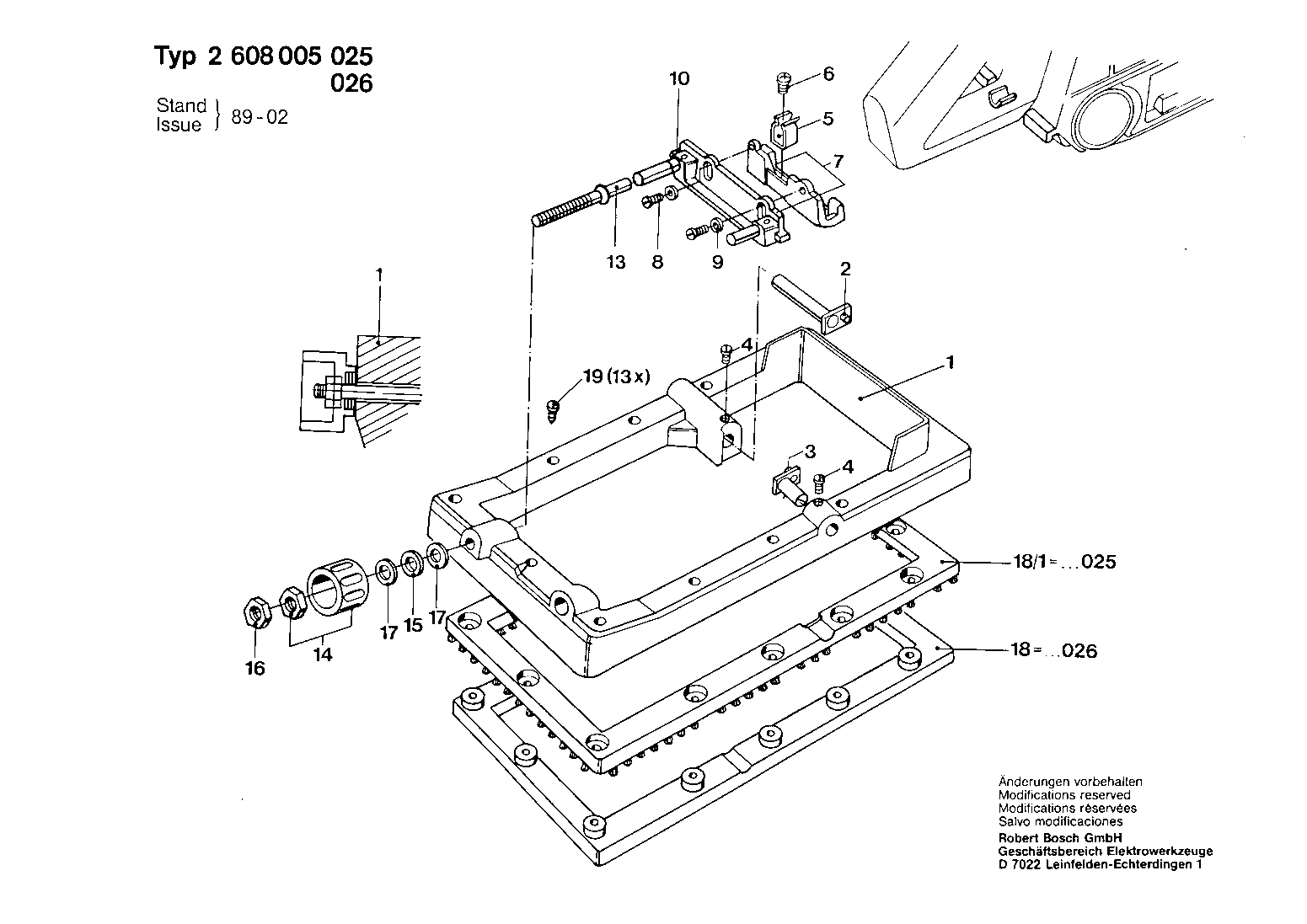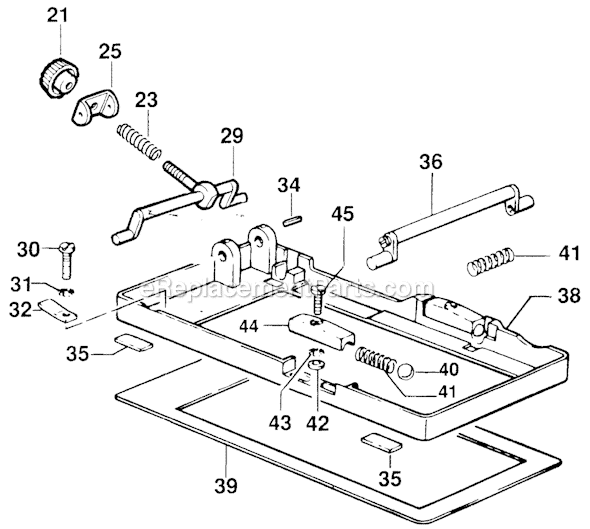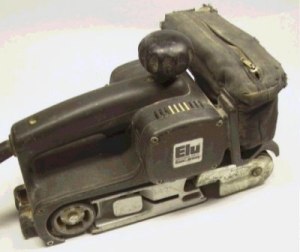Thanks Ron! I never considered being an investigative reporter but you're probably right about missing my calling, judging by my bank account...
I was asked about other belt sander/sanding frame options. These are only available outside of the US as far as I can tell.
The Makita 9903 is made to accept a simple stamped sheet metal sanding frame.
The pointed tabs facing inward fit into the shallow angled slots in the sides of the sander.
It's hard to tell if the mounting tabs are adjustable but they need to be in order to make the frame coplanar with the sanding platen. Even if they are not adjustable with a screw they could be adjusted with a hammer or pliers. Don't laugh, it can be very effective.
With this frame I think the tabs could easily flex enough to allow the platen to tilt if the sander is worked from the handle. I'd operate it from the frame instead.
For general sanding I prefer a frame with stiff bristles on the bottom like the Festool frame. This allows debris to be swept instead of lifting the sander. The Makita frame is flat on bottom (at least is should be) so it could ride up on debris and stop cutting. That isn't good but is way better than a design that allows it to cut too deeply at random, like a belt sander without a sanding frame.
The bad thing about the flat bottom frame is that a loose bit of abrasive can get ground into the work. For this reason this frame is better reserved for fine grits and could be said to be superior to the bristled frame because it can't be pushed down which can happen if you abuse a bristled frame.
Bosch has been making this form of belt sander for a long time.
The sanding frame looks like it is well made and the parts diagram makes it look like a lot of thought has gone into it.
A nice thing about the Bosch frame is that a smooth plastic cover is included. That would be handy if you had to sand down a plug type patch on a finished surface.
The platen should be graphite coated canvas when using a sanding frame. Both the canvas and the graphite conform to the chassis and work surface to assist in the coplanar adjustment. Break-in a new graphite platen by running it in the air a while to flatten the rough graphite particles and let the canvas tighten down to the chassis.
It looks like the two sanding frames will need different methods for adjustment. I'd prefer the Bosch since it can be adjusted in the upright working position. The Makita will need to be adjusted upside down using straightedges and a flat board. With either you'll need to test the fit by blocking the sanding frame from moving on the work surface and then running the sander for a second. Adjust until you get the broadest cut pattern you can. Even if it isn't a full rectangle at first that should improve as the graphite platen wears in.
This is the only belt sander with sanding frame available in NA at present. The sander gets poor reviews on belt tracking.













